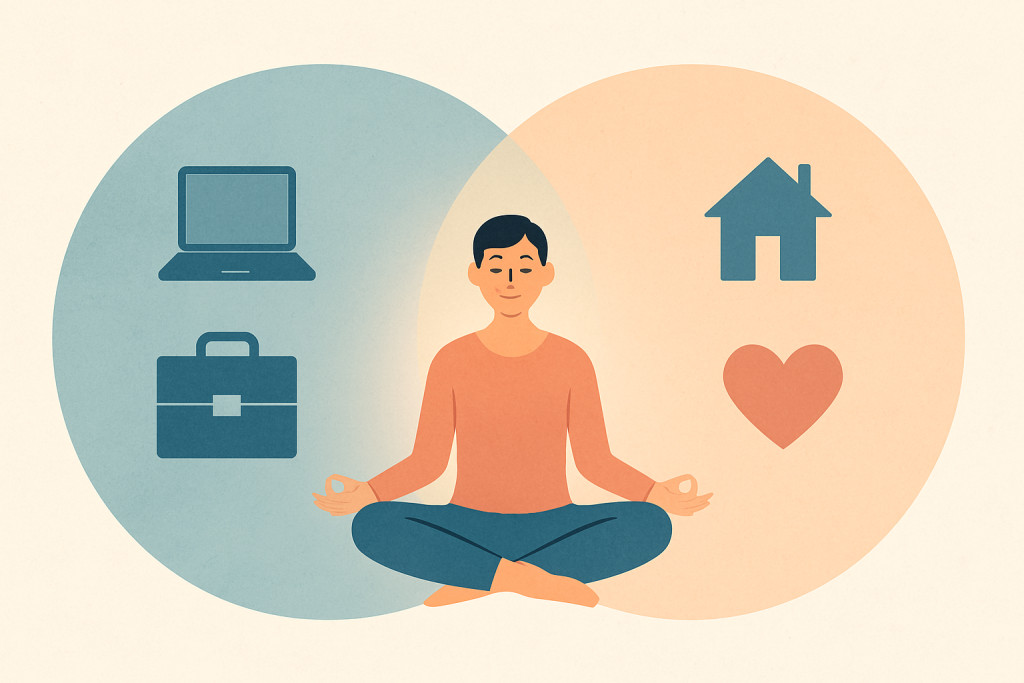
Beyond the Tug-of-War Mentality
For much of my career, I believed in the classic idea of work-life balance — that delicate act of trying to give both our jobs and personal lives just the right amount of time and energy. In the IT industry especially, where tight deadlines, late-night meetings across time zones, and the “always-on” culture are all too familiar, this notion can feel like a never-ending tug-of-war. And like many colleagues I’ve worked with (and yes, been one of), I often ended up feeling like I was losing at both ends — frustrated, stretched thin, or guilty for letting one side “win” over the other.
The term work-life balance itself suggests two opposing forces, always in conflict, and fighting over our attention. But what if we looked at it differently?
From Balance to Harmony
Over the years, I’ve come to embrace a different mindset — work-life harmony. Unlike balance, which implies a constant trade-off, harmony is about integration. It’s about recognizing that our personal and professional lives don’t have to compete — they can actually support and strengthen each other.
Jeff Bezos once said that the idea of work-life balance is “debilitating,” because it sets us up for a struggle. He suggested thinking of work and life as two parts of a circle, feeding into one another in a cycle of energy and fulfillment. That resonated deeply with me. I’ve had days where a great conversation with a client gave me energy to enjoy the evening with my family — and mornings when a joyful breakfast with my son helped me walk into meetings feeling focused and optimistic.
Why Harmony Works — For People and for Business
This isn’t just a feel-good philosophy. Research backs it up: when people feel they can align their work and personal lives meaningfully, they tend to be more creative, productive, and resilient. Simply put, happy people do better work. And businesses benefit from that too — retention improves, innovation rises, and teams are more engaged when employees feel supported.
In environments where harmony is encouraged, I’ve noticed something important: people aren’t just trying to survive their workweek — they’re thriving. They’re bringing their whole selves to the table, without feeling like one part of their life needs to shrink so the other can grow.
Finding Harmony in the Fast-Moving World of IT Services
Of course, in a high-paced, client-driven field like IT services, this kind of harmony doesn’t always come easily. But it is possible — and more importantly, it’s worth pursuing. Here are a few practices that have made a real difference for me and others I work with:
Flex Your Schedule (Smartly):
One of the perks of modern IT work is flexibility. Use it. Shift your hours to handle a school run or take a mindful mid-day walk. Asynchronous tools allow us to stay connected without being chained to real-time responses.
Set (and Respect) Boundaries:
Harmony doesn’t mean being constantly available. For me, simple rules — like “no work emails after dinner” or “no meetings before 9 a.m.” — have helped reclaim personal space and recharge effectively.
Let Passions Overlap:
I’ve found that my love for systems thinking at work helps me organize complex projects at home. And lessons from parenting — like patience and empathy — have made me a better team leader. The lines don’t have to be rigid when both sides bring out your best.
Lean on Support Systems:
Whether it’s company wellness programs or simply a team culture that encourages honest conversations about workload and burnout — these systems matter. On our part, we need to speak up, ask for help when needed, and extend the same support to others.
A Shift in Perspective
Making this shift — from striving for balance to seeking harmony — has been transformational for me and many others in the industry. When we stop viewing work and life as competitors, something powerful happens: our days start to feel more connected, more sustainable, and more meaningful.
Some of the most effective, joyful professionals I know are not those who’ve perfectly separated work and life — but those who’ve thoughtfully blended them. They’ve found a rhythm that works for them, one that respects their energy and honors both their career goals and personal joys.
Let’s Redefine What Success Looks Like
So here’s my invitation — to IT professionals, team leads, and decision-makers: Let’s move beyond the tug-of-war. Let’s create environments where work and life can exist in harmony, supporting rather than undermining each other.
Take a moment to reflect: are you treating your career and personal life as allies or opponents?
I’d love to hear your thoughts or your own strategies for finding harmony in this demanding yet rewarding field. The more we share, the more we can shift the culture — toward one where success doesn’t come at the cost of well-being, but includes it
